Scenic Design: what it is and one simple method to magnify it
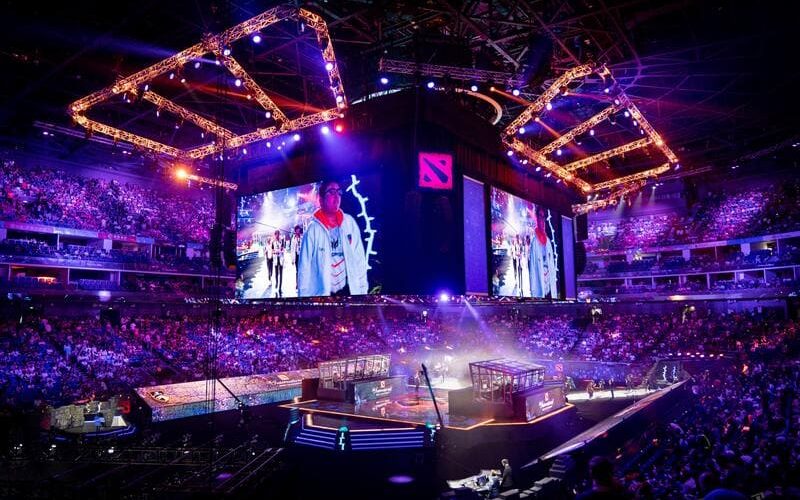
In some cases, it can be a sign of excellence when the work done is not apparent, as with plastic surgery for example. The execution is such that it blends perfectly with the environment around, just as if it were natural. And for a while, scenic design fit entirely in that category. In representations, it provided the main “actors” an organic space to evolve in, and simply served as a flamboyant spotlight. But nowadays, with the rise of entertainment, spectators have keener eyes and want overall experience as much as performance.
In that regard, scenic design is now coming out of the shadows and transcending the function it was bestowed upon.
This article presents how scenic design is a way of standing out from the competition, and defines how technological advancements help in that process.
What is scenic design?
First of all, let’s define what scenic design is. It is the creation of theatrical, performance, event, film or television scenery. In other words, scenic design is the combination of technological and material stagecrafts to represent, enact, and produce a sense of place in performance. In fact, the scenic designer is responsible for the visual appearance and function of the scenic elements used in the production. Scenic designers often work closely with directors and producers of the project.
A lot of different phases take place from the design concept to the stage, and designers each have their own means and methods to create. Scale models of the sets or 3D colored computer renderings are examples of methods used in the creative process.
A complete scenic drawing set generally consists of:
- basic ground plan showing all stationary scenic elements;
- composite ground plan showing all moving scenic elements, indicating both their onstage and storage positions;
- section of the stage space incorporating all elements;
- front elevations of every scenic element, and additional elevations or sections of units as required.
It is important to know scenic design has many names: scenography, stage design or set design. While they all refer to the same concept, each industry has more or less its own denomination.
The second part will demonstrate where scenic design is so far, how it is applied in each major industry.
Scenic Design to this day
Scenic design has its roots in representation’s most ancient art form: theatre. It is therefore just as old. While it has evolved through time, scenic design actually did through the characteristics carved in it by theatre. Scenic design’s sole purpose was to provide a space for the actors to live in. An environment that draws the spectator almost imperceptibly in, and where actors exist naturally. If, during a play, spectators saw the stage design as a stage design then it had failed its purpose.
However, scenic design gained from the emergence of new forms of arts and entertainment and its function expanded.
Let’s see how scenic design has been applied until now in the different industries.
Theatre
As mentioned earlier, theatrical stage design is just as old as the theatre itself. And since its creation, needless to say there’s been countless types and styles of theatrical scenery. In fact, the stage design adapts to the needs and genres of the play in question. Therefore, scenery can be anything, from a plain wooden box to a meticulously rebuilt famous magical castle. It can consist of a single item, whether custom-made or the genuine item, adapted for theatrical purposes.
In the 1500s-1600s, theatre’s most influential era (Shakespearean), plays were written so as to rely the least possible on scenery. The goal was to convey an atmosphere without taking away anything from the actors or the acting.
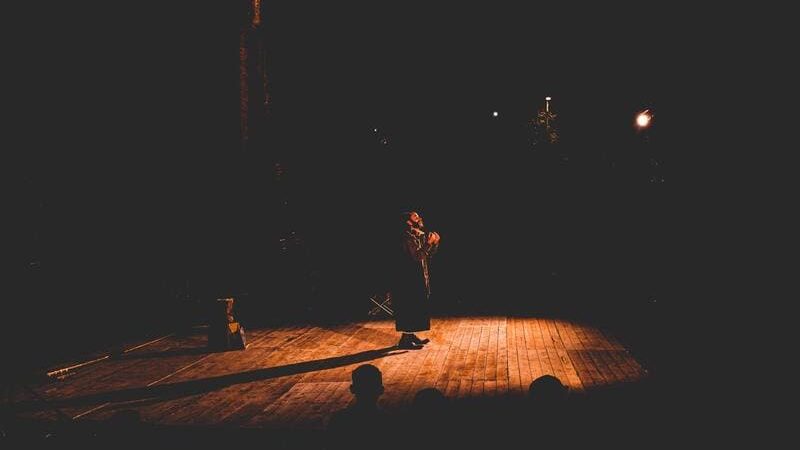
While that notion is still deeply anchored in, set designers are willing to veer off a little of this course. Stage design is now as important as anything in theatre, and has become a character in its own right.
Nowadays, modern stagecraft has become complex to the point that it requires highly specialized skills from hundreds of artists and craftspeople to mount a single production.
So much that building a stage design is usually the most time-consuming aspect of creating a play.
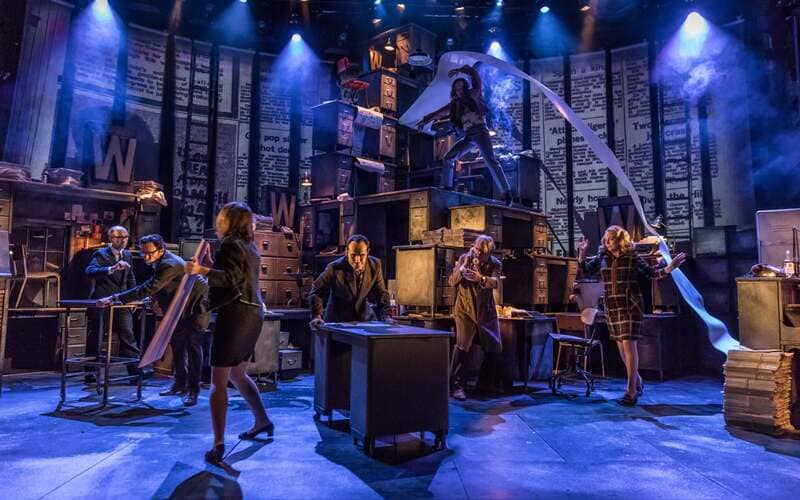
The construction of theatrical scenery will be frequently one of the most time-consuming tasks when preparing for a show. Due to the fact that future shows are rarely anticipated in advance, theatres frequently build stock scenery that can be readily altered to accommodate a range of plays.
Concert & Live Music Venues
The concept of a concert venue is nearly as old as that of theatre. In fact, delivering a live music performance in front of an audience is as old as music itself. But as time passed and society evolved, music grew more complex and became extremely popular, and so did concerts. In fact, as there is a variety of music genres, there are a variety of venues and shows suited to the music performed. On the one hand, music styles such as classical, jazz or acappella are often performed on plain scenes focusing on the artists first and foremost, scenes not unlike that of traditional theatre. On the other hand, highly popular music such as pop, rock, hip-hop or electronic music constantly redefine stage design standards.
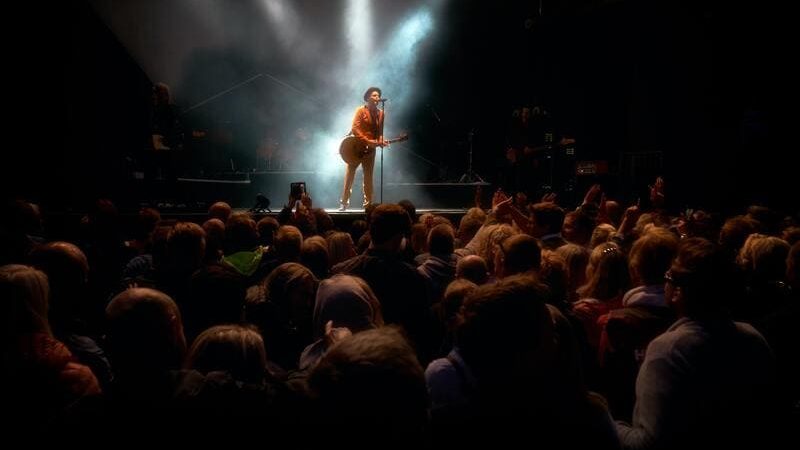
Actually, these latter music genres have a level of popularity unprecedented in history. Biggest artists are listened to by millions of people, and fill hundred-thousand capacity arenas. That developed the need for artists to differentiate themselves from the competition, and provide true experiences and entertainment in live performances.
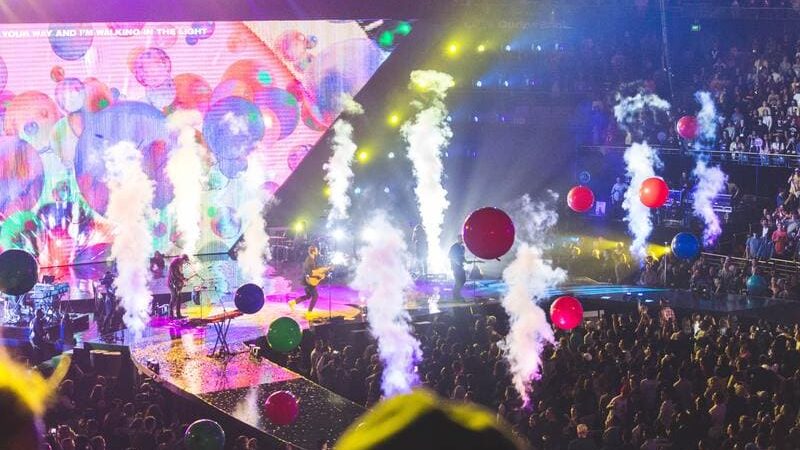
In that regard, concert stage designers, while not especially known from the general public, became genuine stars in the business. They were at the heart of transforming spaces into the artists’ visions, and created exclusive moments of life. From gigantic recreated structures to apparently simple yet highly effective tricks involving the public, their role is essential.
Besides, the expansion of festivals, led by electronic music, is a definite manifestation of the need for experiencing music differently and more intensely. All over the world, stage design for music festivals flourish, big and small, on the beach or on the concrete.
Regarding venues, stage design acts as the experience provider. While it obviously cannot substitute for the artistic performance, stage design delivers the visual and sensory aspect of the show.
TV and Movie Scenic Design
Television and film scenic design is nearly identical to theatre’s. Indeed, they share the same essence. However, while theatre’s can merely be a suggestion or an idea of the environment where the actors evolve, the other must meticulously define and represent the area of expression. More than a space for the actors to belong in, movie set design is an area characters cannot live outside of.
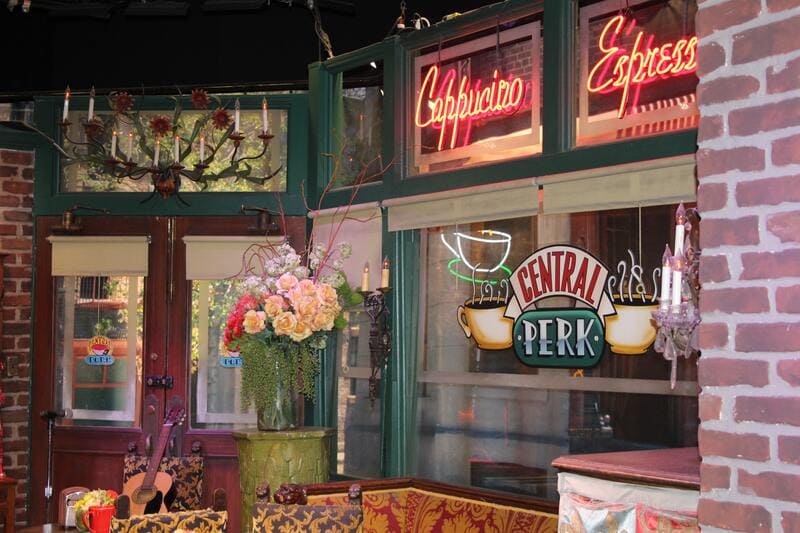
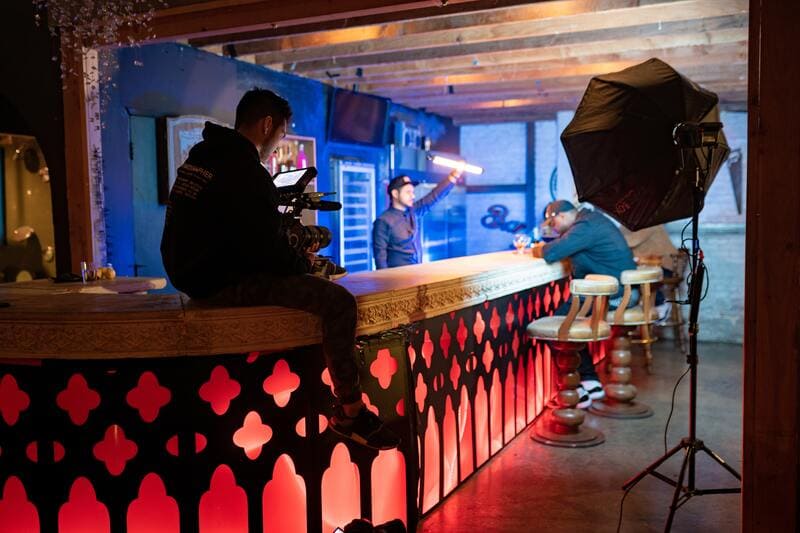
As an example, to recreate the feeling of past American decades, WandaVision series really went back in time. Indeed, the Marvel show based its narrative on one decade an episode, starting from the 1950’s. To anchor the viewer in the story, stage design is therefore crucial. As a matter of fact, all furniture was adapted according to the moment in time the episode represents.
Scenic Design amplified with technology
As with nearly every facet of society and arts, the emergence of new technologies creates fresh perspectives for scenic design. Let’s see some groundbreaking examples of stage design transformed via technology.
Exemples
“Network” Theatre Play
In the play adaptation of Oscar-Winning film “Network”, designers Versweyveld and Yarden took stage design to another level. The whole show takes place in an accurately recreated retro-futuristic TV news studio. The play’s 2-year run on Broadway mesmerized the audience with huge live videos projected during the performance. Meant to intensify the story, the images were filmed live and simultaneously broadcasted in real-time on a huge screen for the audience and on smaller ones for the fake TV news production crew on stage. The scenic design for the TV studio featured over 50 screens across various types of monitors adding to a massive LED video wall and 6 video projectors.
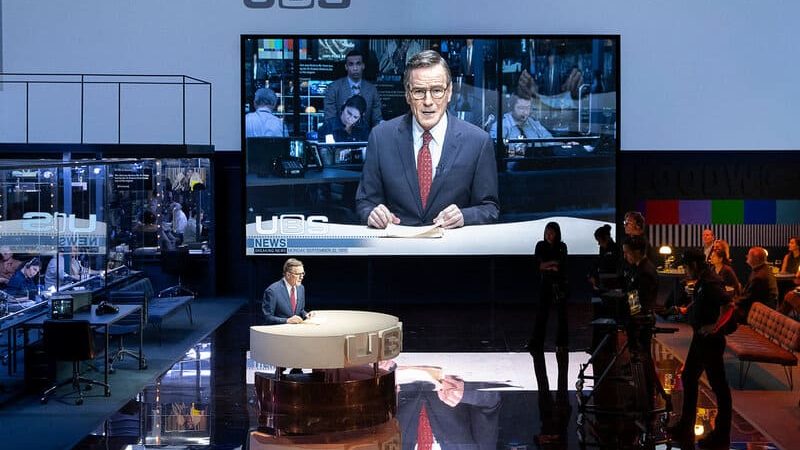
Music Video Clip
As a variant of movie stage design, music video clips are fantastic ways for artists to express their vision. There are many different styles of music video clips but when technology is added to it, it rarely disappoints. French music band Free for the Ladies used projection mapping in their set design when filming and the result is electrifying. Filling their instruments and faces with color waves thanks to the most user-friendly mapping software, music vibes are flowing through the screen.
Etienne de Crécy Live Show
A reference in electronic music, Etienne de Crécy’s Square Cube is what set him apart in the minds of many. In 2007, the premiere of his audiovisual “Beats’n’Cubes” tour created a sensation. Adding to De Crécy’s new techno-like sound is his Square Cube installation. It takes the form of a scaffolding structure, topped with a screen. A giant square sculpture on which are projected geometric shapes, creating a fascinating series of visual illusions that naturally echo the electro and instrumental music of the artist.
Samsung Corporate Event
For the launch of Samsung’s new range of Smart TVs, The Projects created an experiential corporate event. The scene was set so speakers could take on the spotlight and explain all the different benefits of Samsung’s new products. But before that could happen, the stage lit up. Indeed, the Sydney Lyric Theatre stage design was filled with an immersive projection mapping. Amazing content was delivered in front of the audience’ eyes to express and represent all the possibilities offered by the brand.
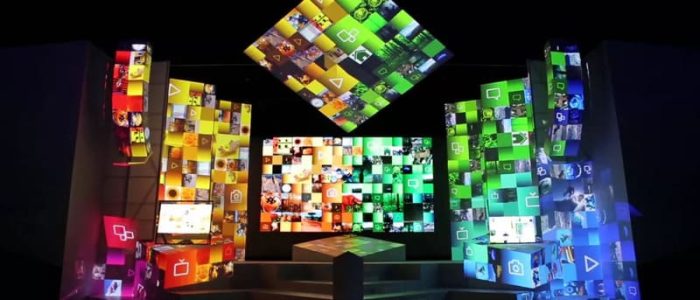
Through this article, we have seen that scenic design has completely transcended its function in every industry. In fact, it was originally meant to set the scene for main characters to take the spotlight. It is now wielded and recognized as the main element to deliver the experience aspect in a performance. Moreover, in a society where entertainment options are ever-growing, developing scenic design represents a clear competitive advantage. In that regard, technology is the main card to play as it redefines the possibilities offered to stage designers.
However, not every kind of new technology can be harnessed that easily and also suited to any kind of performance. As seen in the last examples, projection mapping is the most useful tool that can be adapted anywhere and fit any kind of scenic design project. In fact, easy-to-use and reliable solutions exist to create immersive experiences in seconds. Projection mapping software HeavyM is a plug & play solution that works with any kind of projector. Stage designers can create their vision in the software and project their reality thanks to a wide range of tools: Integrated visual library, multiple inputs, multi-projection, edge-blending, music reactivity, MIDI, NDI.. It is the way to immerse a crowd and make them live an unforgettable experience!
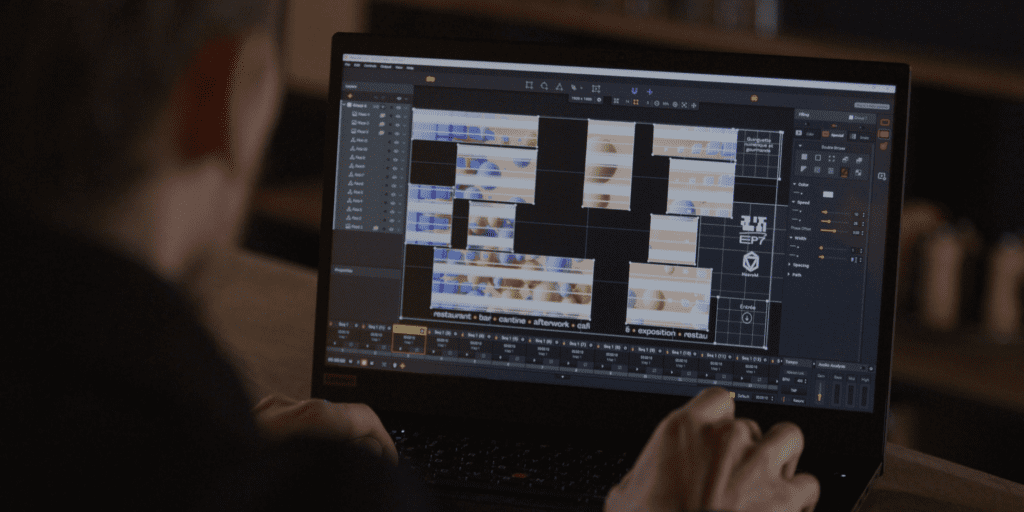
To be continued
Explore the HeavyM software
HeavyM is a video mapping software that is capable of generating visual effects and projecting them on volumes, decorations or architectural elements. HeavyM is Mac and Windows compatible.
Discover users' projects!
Dive into the HeavyM community and get inspired! From artists to event organizers, explore how they’re crafting mesmerizing visuals with multiple projectors. Need ideas? This is your starting point.

